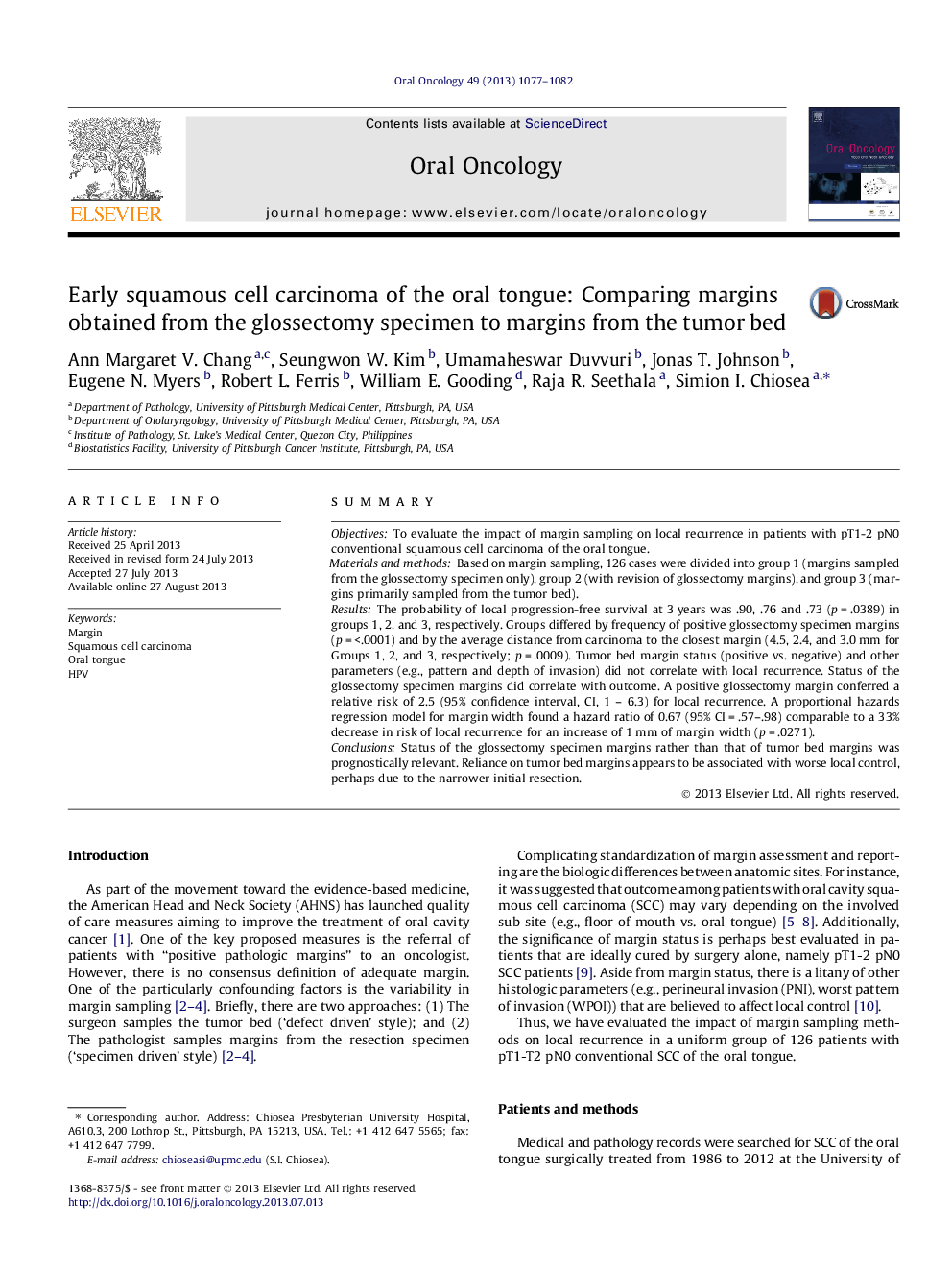| Article ID | Journal | Published Year | Pages | File Type |
|---|---|---|---|---|
| 3164328 | Oral Oncology | 2013 | 6 Pages |
SummaryObjectivesTo evaluate the impact of margin sampling on local recurrence in patients with pT1-2 pN0 conventional squamous cell carcinoma of the oral tongue.Materials and methodsBased on margin sampling, 126 cases were divided into group 1 (margins sampled from the glossectomy specimen only), group 2 (with revision of glossectomy margins), and group 3 (margins primarily sampled from the tumor bed).ResultsThe probability of local progression-free survival at 3 years was .90, .76 and .73 (p = .0389) in groups 1, 2, and 3, respectively. Groups differed by frequency of positive glossectomy specimen margins (p = <.0001) and by the average distance from carcinoma to the closest margin (4.5, 2.4, and 3.0 mm for Groups 1, 2, and 3, respectively; p = .0009). Tumor bed margin status (positive vs. negative) and other parameters (e.g., pattern and depth of invasion) did not correlate with local recurrence. Status of the glossectomy specimen margins did correlate with outcome. A positive glossectomy margin conferred a relative risk of 2.5 (95% confidence interval, CI, 1 – 6.3) for local recurrence. A proportional hazards regression model for margin width found a hazard ratio of 0.67 (95% CI = .57–.98) comparable to a 33% decrease in risk of local recurrence for an increase of 1 mm of margin width (p = .0271).ConclusionsStatus of the glossectomy specimen margins rather than that of tumor bed margins was prognostically relevant. Reliance on tumor bed margins appears to be associated with worse local control, perhaps due to the narrower initial resection.
